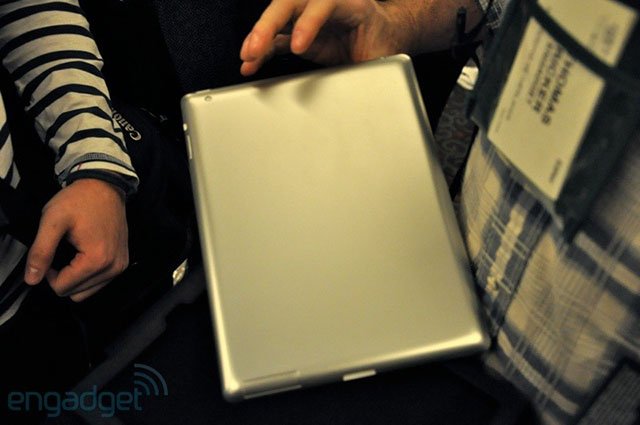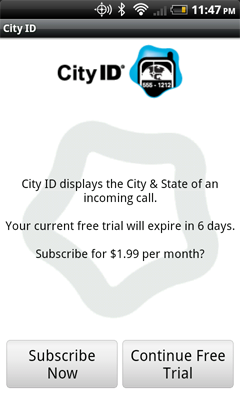It’s that time again: CES, the annual consumer electronics convention in Las Vegas where companies show off their gadget game plans for the upcoming year.
This is usually the biggest time of year for gadget news – tech blogs and Twitter feeds are overflowing with information, which can be too much for even those paying attention all day. These are the most significant things I noticed from today’s announcements:
LTE smartphones barrel forward while American carriers slap a “4G!” sticker on their 3G networks
Phone after phone gets announced, almost every one of them having the same specs: 4.3″ display, Android 2.3 “Gingerbread,” dual-core 1GHz ARM CPUs, front- and back-facing cameras. The only development here over that of one year ago is the extra CPU core, really- HTC’s EVO 4G and Incredible of yesteryear are almost identical to their HTC ThunderBolt, which only adds LTE to the mix.
Sadly, this year’s announcement of 4G phones doesn’t live up to the hype being generated by the phone carriers. The reason: most of the phones marketed as “4G” run HSPA+, which is actually just the fastest revision of current 3G GSM technology. The real 4G phones have converged on the LTE standard, except for Sprint, which bet its chips on WiMax to get a years’ head start. AT&T today followed T-Mobile’s lead in deceptively rebranding their existing network as 4G. The reason? Their own LTE 4G transition won’t be complete until 2013, while Verizon’s antennae lit up in December 2010. If you’re buying a phone in 2011, take the time to find out if it can even take advantage of these next-generation networks that offer incredible speed boosts.
Sources:
- Engadget: HTC ThunderBolt in the wild one more time: 8GB internal, no HDMI?
- The Wall Street Journal: AT&T Pins 4G Label to Existing Network
Legitimized by consumers as a new device format, slates turn to Android
Last year, manufacturers flooded CES with slate devices in anticipations of the rumored Apple iPad. Without exception, they all sucked, being low-cost devices with Android 1.5 or 2.0 haphazardly tacked on without any considerations to changing a UI designed for 3.5″ phone screens.
This year, everyone knows the iPad is a bombshell at around 10 Million sold, and wants to get in on an obvious growth market. Google today announced the Tablet-specific version of Android 3.0, “Honeycomb”:
[youtube=http://www.youtube.com/watch?v=hPUGNCIozp0&w=640&h=385]
(Stay tuned to ZekeWeeks.com or @ZekeWeeks for my in-depth reactions to Android 3.0 Honeycomb – to be posted soon.)
A possible iPad 2 tease on the show floor

Engadget’s bloggers were trying to fit their iPad into a vendor’s unique iPad case on the show floor when they were told it wouldn’t fit, as it was designed for the next iPad. Better yet- the case included a metal mockup with the supposed form for the iPad 2. Is it real, or just a clever PR exploitation of the Apple rumor mill? Read Engadget’s great post about it all, including a photo gallery, here.
Microsoft takes desktop Windows to the mobile ARM platform, while Nvidia takes ARM to the Desktop format
After enjoying moderate success from the Atom-powered netbook boom of 2008-9, Microsoft has obviously read the tea leaves that all the cool kids are building their devices on ARM-based System-on-a-Chip (SoC) silicon, instead of the traditional IBM PC setup that’s been shrunk down to miniature form on netbooks. In an effort to make Windows avoid complete irrelevance take advantage of current ARM innovations, Microsoft has announced that the next version of Windows will run on ARM in addition to x86/AMD64. But all Windows executables will need new ARM-compatible versions, unless Microsoft has a Rosetta-esque dynamic translator up its sleeve. That Windows would even consider this route on consumer devices is interesting, as Windows apps are have been forwards compatible since the 1980s. Perhaps it’s a telling sign of Windows’ ability to compete in the future. (And perhaps I’m looking to far into this.)
On the other side of this coin, chipset maker Nvidia announced “Project Denver,” their adaptation of the mobile ARM architecture to high-power desktops and servers. (Jon Stokes writes more about Project Denver at Ars Technica.)
Yet again, a big web property’s new feature makes independent developers’ products irrelevant; This time, it’s Twitter
This isn’t really CES news, but it still got buried in all the CES coverage: TechCrunch secured confirmation on reports that Twitter will release a first-party Mac application during tomorrow’s launch of the Mac App Store. If it’s free, and even more so if it’s ad-free, third party developers are not gonna be happy (though one could argue that they have ample opportunities to innovate beyond “cookie cutter” Twitter clients.)
So there you have it. Tons of stuff today! Stick around on ZekeWeeks.com or just follow me on Twitter, as I’m sure to post on anything of major significance that emerges amongst the thousands of announcements made at CES. Coming up next is my in-depth analysis of what is to come of Honeycomb, Google’s slate-specific version of Android OS.
